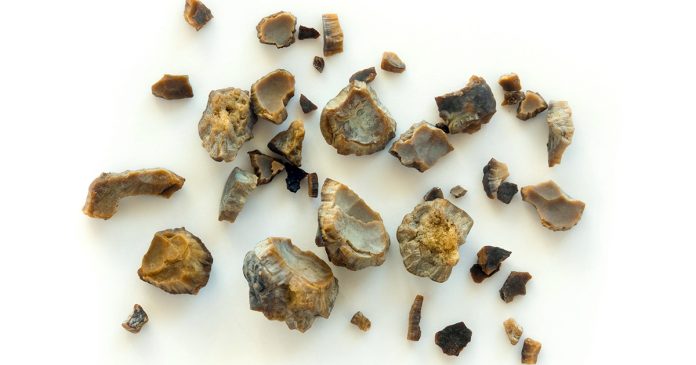Bladder Stones are small hard masses of minerals from the urine. When minerals form a lump and harden inside the bladder, these stone-like masses are formed. There are cases when such stones are known to pass on their own. When they do not, you need medical treatment under proper guidance to get rid of them. If left untreated, it can give rise to a bigger problem of urinary tract infections.
Table of Contents
Symptoms
Here are some of the common symptoms that patients with bladder stones tend to face-
- Change in colour of urine
- Urine can seem to be dark and cloudy
- Blood in urine
- Pain or burning while urinating
- Frequent urination
- Difficulty in starting and stopping while urinating
- Urinary Tract infection
- Developing a vomiting tendency after heavy meals
- Muscle aches
In facing any of the above difficulties, it is always better to consult your doctor as soon as possible. You may have to go through some tests such as urine, imaging, and Cystoscopy as prescribed by your doctor. These tests will help to understand what treatment will be necessary to remove the bladder stones.
Treatments for Bladder Stones
Whether bladder stone will pass naturally depends on the size of the stone. Clinical examination and investigations are performed to understand the bladder stone’s size, location, and nature. Based on the findings of such examinations physicians will suggest the best way by which the bladder stones can be removed. Some common treatments for bladder stones are:-
How many ounces in a cup? I’m not sure and I don’t think anyone really is! But this article will answer all those questions. Do you have any questions about making tea, coffee, or cocoa? Find the answers here!
- Conversation Therapy
The ‘Wait & Watch’ approach is critical in cases of bladder stones. It is because not all bladder stones are big enough. Some are smaller in size and can pass through naturally. It requires the patient to drink lots of water to increase urine volume. It will allow the stones to flush out of the urinary tract.
Identifying the actual cause of the incidents of bladder stones will also help to know the best way to get rid of them. People with a high dietary intake of calcium or oxalates or drinking water with high mineral content are advised to follow a specific diet and cut down on alcohol and beverages.
- Cystolitholapaxy
During this treatment, a scope is used by doctors or urologists to identify the stone. A thin tube with a camera at the end is inserted into the urethra to view the stones. Then the stones are broken into tiny pieces with the help of ultrasound or laser. It is done under the effect of anaesthesia. The tiny pieces are then easier to remove from the bladder.
- Percutaneous suprapubic cystolitholapaxy
It is mainly used for treating children to avoid causing damage to their urethra. Also, adults detected with large-sized bladder stones can be recommended for this treatment process. In this technique, the insertion of a tube in the urethra is avoided. Instead, a small cut is made in the lower abdomen and then a cut is made in the bladder to remove the stones. General anaesthesia is done to perform the surgery.
- Open Cystostomy
Men with huge prostate are treated for bladder stones by performing an open cystostomy. It is similar to Percutaneous suprapubic cystolitholapaxy, except the cut is much more prominent in the abdomen and bladder.
- Surgery
Open surgery is recommended and needed when bladder stones are huge. An abdomen incision is made to take the stones out of the bladder.
- Medication
Dissolution of bladder stones can also be sometimes possible through some medication. It is particularly possible in cases of uric acid, where oral alkalinizing agents can be used to treat the condition if a high pH level can be maintained long enough. It is done with oral potassium citrate.
Again, patients having a history of nephrolithiasis may get a result from metabolic evaluation. Also, periodic bladder instillations of ¼% of acetic acid solution can help dissolve calcium phosphate crystals and prevent the formation of bladder stones.
Final Words
It is essential to understand that identifying the disease’s cause is vital to eliminating it. Thus, treating the underlying cause is equally important to prevent bladder stones from forming again in the future. For cases with incidents of prostate enlargement, neurogenic bladder, cystocele, and bladder diverticula, it calls for focussed treatment to help you get rid of any symptoms of pre-occurrence of bladder stones.
Treating the cause forms the path of proper bladder stone treatment, which is how you can identify the best way to get rid of bladder stones. Smaller ones can sometimes pass out on their own, but the bigger ones can create problems and should not be ignored. If you are facing any major symptoms and are considering consulting a doctor, make sure you reach out to the experts at the Max Healthcare group for medical guidance.
Read More Health Blogs:
10 Common Questions About LASIK Eye Surgery










